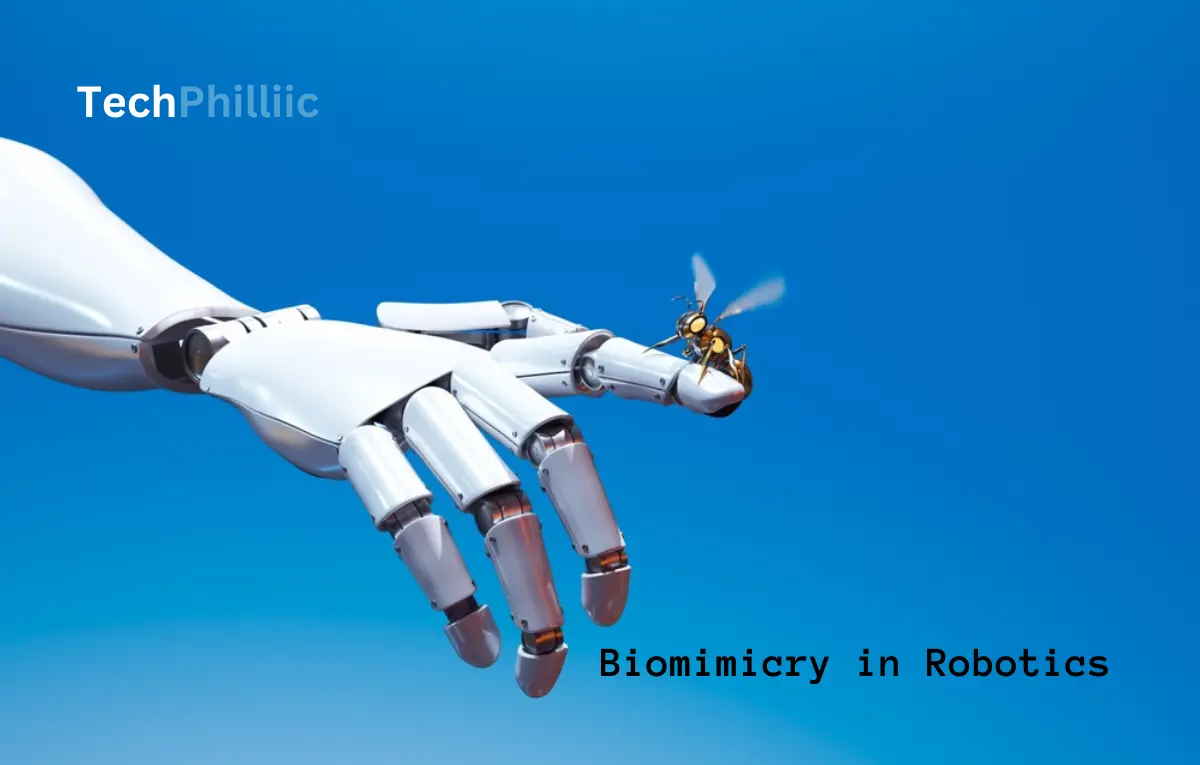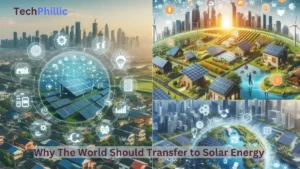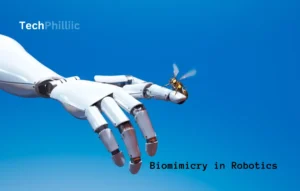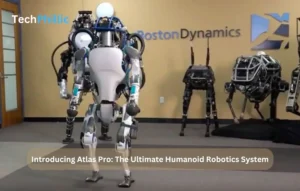Have you ever seen a fish swimming across water with ease or a gecko defying gravity by climbing a wall? Biomimicry in robotics, is being spurred by these apparently miraculous achievements of nature. The method of using natural processes and designs as a model for human design in order to address problems is known as biomimicry. Biomimicry in robotics is helping to create amazing robots in the field of robotics that have more power, efficiency, and flexibility.
This article explores the intriguing field of robotics biomimicry. We will examine the ways in which engineers are using plants and animals as sources of inspiration for their future generation of robots. We will learn about particular applications of biomimetic robots already in use as well as the fascinating prospects they provide for the future.
Nature’s Inspiration: Animals as Engineers
The animal world has many creative strategies for locomotion, survival, and problem-solving. Biomimetic robots use these amazing natural phenomena to do incredible feats:
- Climbing and Walking Robots: Imagine robots that are able to easily climb walls or handle uneven terrain. This is the idea behind robots that are modeled like ants and cockroaches, which are renowned for their dexterity and capacity to navigate rough terrain. Robots can stick to walls and ceilings thanks to sticky patches designed to resemble the tiny hairs on gecko feet. Applications for this technology include planetary exploration, building upkeep, and search and rescue operations.
- Underwater and Swimming Robots: Robots have particular difficulties in the aquatic environment. Fish-like robots can move smoothly through water with little resistance because of their streamlined bodies and fins, which are modeled like those of fish, dolphins, and whales. For jobs like environmental monitoring, underwater research, and even deep-sea search and rescue operations, these robots are indispensable.
- Helicopters: Science fiction is no longer when robotic insects and birds take to the air. Robots that fly that are biomimetic mimic insects and birds, such as dragonflies, in their design. These robots are very agile and maneuverable, which makes them perfect for jobs like crop pollination, aerial photography, and search and rescue in challenging environments.
- Snatching/Controlling Automata: Robots with exceptional grasping capabilities are being developed as a result of the complicated manipulation skills shown by animals such as elephants with their dexterous trunks and octopuses with their flexible tentacles. Because they can precisely handle delicate things, these robots are essential for jobs in manufacturing, medicine, and even bomb disposal.
These are just a few instances of how biomimicry is influencing robotics in the future. Every biomimetic robot design pushes the limits of what is possible for robotics by not just imitating a particular biological characteristic but also applying it to practical uses.
Beyond Animals: Biomimicry in Action
Biomimicry is much more than just copying the characteristics of animals. Engineers are using a variety of natural phenomena as inspiration to build innovative biomimetic robots:
- Textures of Surfaces: The secret of effective mobility and self-cleaning qualities is found in nature. For example, the distinct texture of shark skin lowers drag, enabling sharks to move through the water with ease. Similar textured surfaces are being created for biomimetic robots in order to increase their efficiency in a variety of situations. In a similar vein, robots designed for low-maintenance applications may emulate the water-repellent and dirt-shedding surface of lotuse leaves to achieve self-cleaning capabilities.
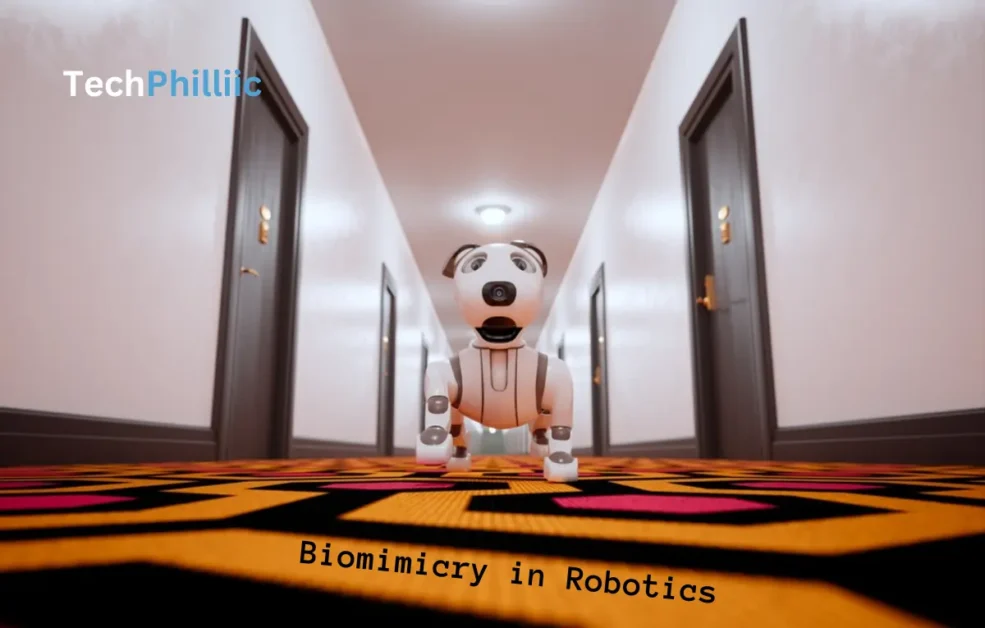
- Science of Materials: Nature has figured out how to build buildings that are both robust and light. For example, while seeming fragile, spiderwebs are surprisingly powerful. Researchers studying biomimicry are attempting to replicate these organic materials in order to create durable, lightweight robots with a range of uses. Another amazing natural material that may be used to inspire the construction of robust but flexible robots is bone.
- Robotic Swarm: Swarm robots is being facilitated by biomimicry, which is taking a lesson from social insects such as ants and bees. Swarm robots are a group of tiny, synchronized robots that cooperate to accomplish a single objective. Swarm robots, which are inspired by the collective intelligence of these insects, are capable of carrying out difficult jobs like cooperative building projects or search and rescue missions in disaster areas.
The Future of Biomimicry in Robotics
Thanks to biomimicry, robots has a bright future full of fascinating possibilities. Here’s a little peek at what is ahead:
- Higher-Level Features: Robots might be outfitted with capabilities via biomimicry that are on par with or even greater than those of humans. Imagine robots that are inspired by certain insects or birds to have improved eyesight, or robots that are inspired by sensitive animal organs to have a heightened sense of touch. These developments have the potential to completely transform industries including environmental monitoring, robotic surgery, and medical diagnostics.
- More Flexibility and Independence: Robots that can think, feel, and solve problems like living things are becoming more and more like live things thanks to biomimicry. Robots might become more independent and adaptive, able to function in challenging and unpredictably changing situations, by modeling the brain networks of animals. Tasks like planetary exploration, disaster relief, and even tailored treatment might be revolutionized by this.
Cooperation Between Robots and Humans: The potential for biomimetic robots, which are intended to seamlessly interact with people, is enormous. Imagine having robots anticipate our wants, recognize our motions, and work productively side by side with us. This cooperative method may be essential for jobs in assisted living, industry, and even teaching.
However, biomimicry in robots also brings up ethical questions in addition to the fascinating potential. The increasing sophistication and autonomy of robots raises concerns about employment displacement, safety, and possible abuse of these technology. Ethics and responsible development will be essential to guaranteeing that biomimetic robots benefit mankind as a whole.
Also Read: Introducing Atlas Pro: The Ultimate Humanoid Robotics System
Conclusion: A Future Inspired by Nature
Biomimicry in robotics is about using nature’s creativity to generate amazing possibilities for the future, not simply about replicating its ways. Biomimicry is expanding the realm of robot capabilities, enabling robots to interact with people in natural ways and traverse difficult environments.
This method not only produces robots that are more versatile and efficient, but it also creates opportunities for whole new uses. Biomimetic robots might transform a number of industries, including manufacturing, healthcare, environmental monitoring, and space exploration.
However, biomimicry in robotics requires careful consideration of ethical concerns, as with any sophisticated technology. To make sure that these robots be employed for the benefit of mankind, it is imperative that responsible development and open discourse be maintained.

